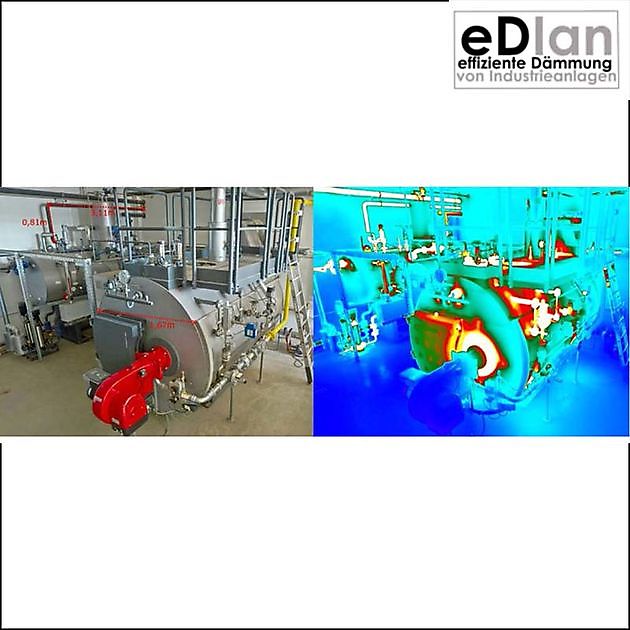New developments 3D / Thermography
New developments 3D / Thermography
The Hochschule für angewandte Wissenschaften Würzburg-Schweinfurt in Germany started the project eDIan (effiziente Dämmung von Industrieanlagen) in 2016.
The aim of this project is to be able to perform a thermographic and geometric measurement of energy losses on site. This is currently done in a so-called TIPCHECK energy audit. However, this method is very time consuming because all work steps are performed manually. The temperature is determined with a contact thermometer and the geometry is measured with a measuring stick. The aim of the eDIan project is to develop an automated thermographic and geometric registration of industrial installations. The combination of 2D thermographic images with 3D laser scans allows the local allocation of heat losses and their economic assessment. Tailor-made insulation measures are then developed using a reverse engineering process based on the digitized surfaces. The process to be developed is intended to replace the current procedure in order to enable a faster inventory based on a digital platform.
The project group, consisting of nine companies, including manufacturers of insulation materials, energy consultants, interest groups, foundations and universities, was supported with more than half a million euros from the Federal Ministry of Education and Research. The condition was that a partial financial contribution was also made by private parties. VIB participated in this until the end of 2018.
The project has now led to tangible results. This video shows that a measurement can be carried out on site. It provides an approachable 3D representation of the site and a thermographic overlay. Measurement of insulation elements can take place on the basis of this project.
The next step concerns the processing of visual material in which the surface properties are involved. It is known that thermography has to take into account the effects of glossy surfaces. The reflective properties of, for example, metal influences the conversion of measured values to surface temperatures.
This accompanying article examines this problem and provides a better approximation method for calculating the surface temperature.
![]() Download PDF information: 16105471812012.11332.pdf
Download PDF information: 16105471812012.11332.pdf
Would you like to read more blog posts? Go to the page NEWS.

